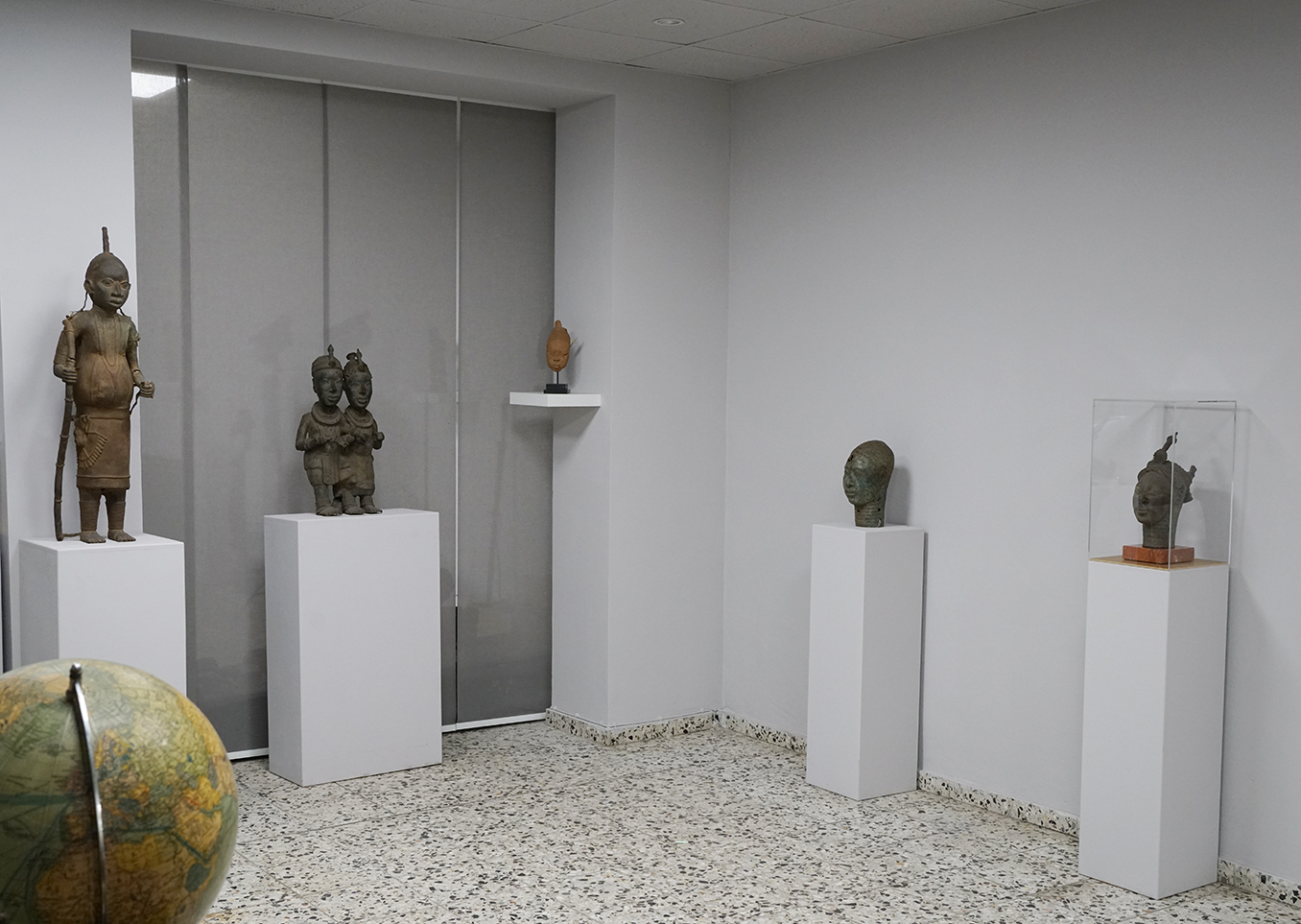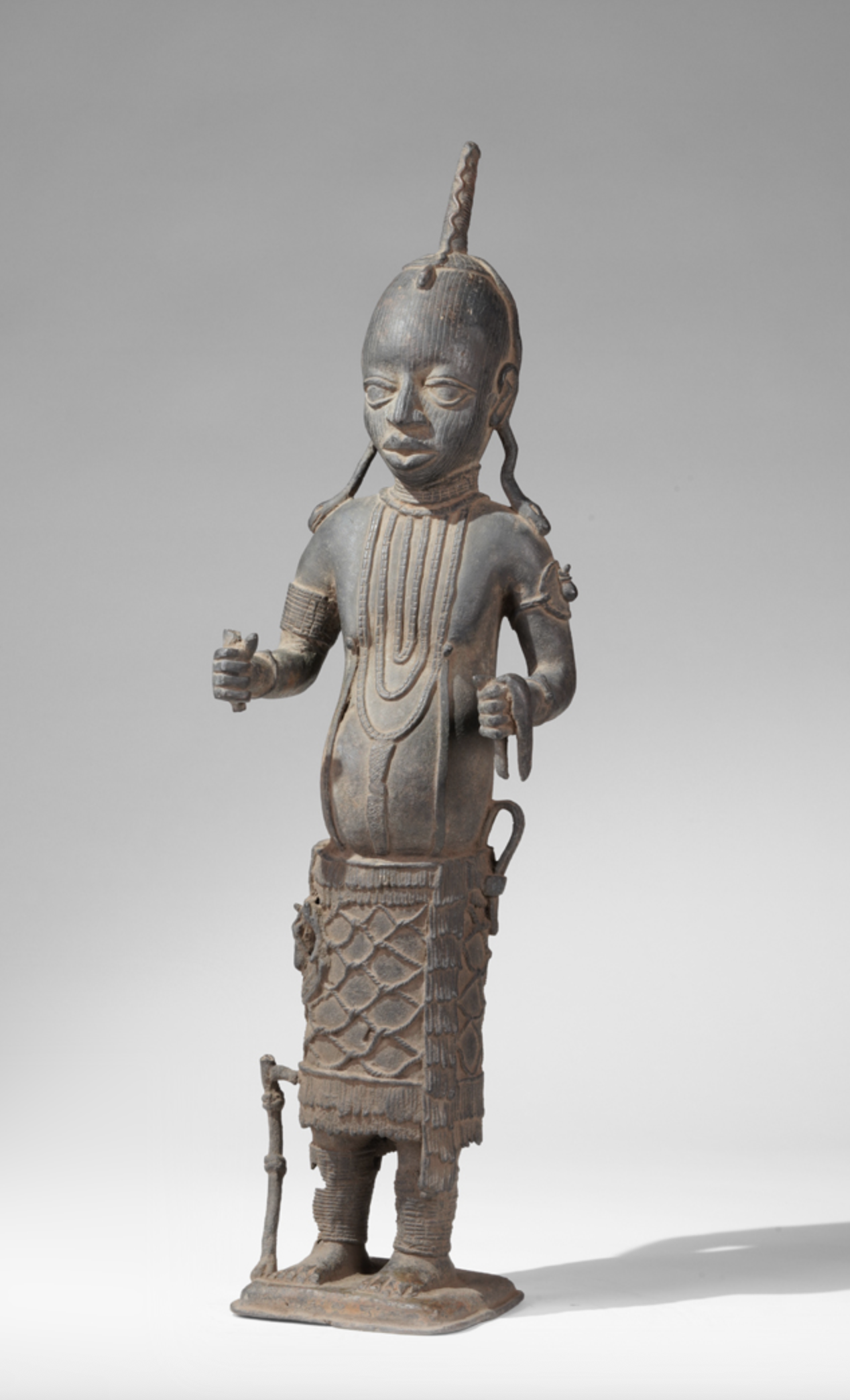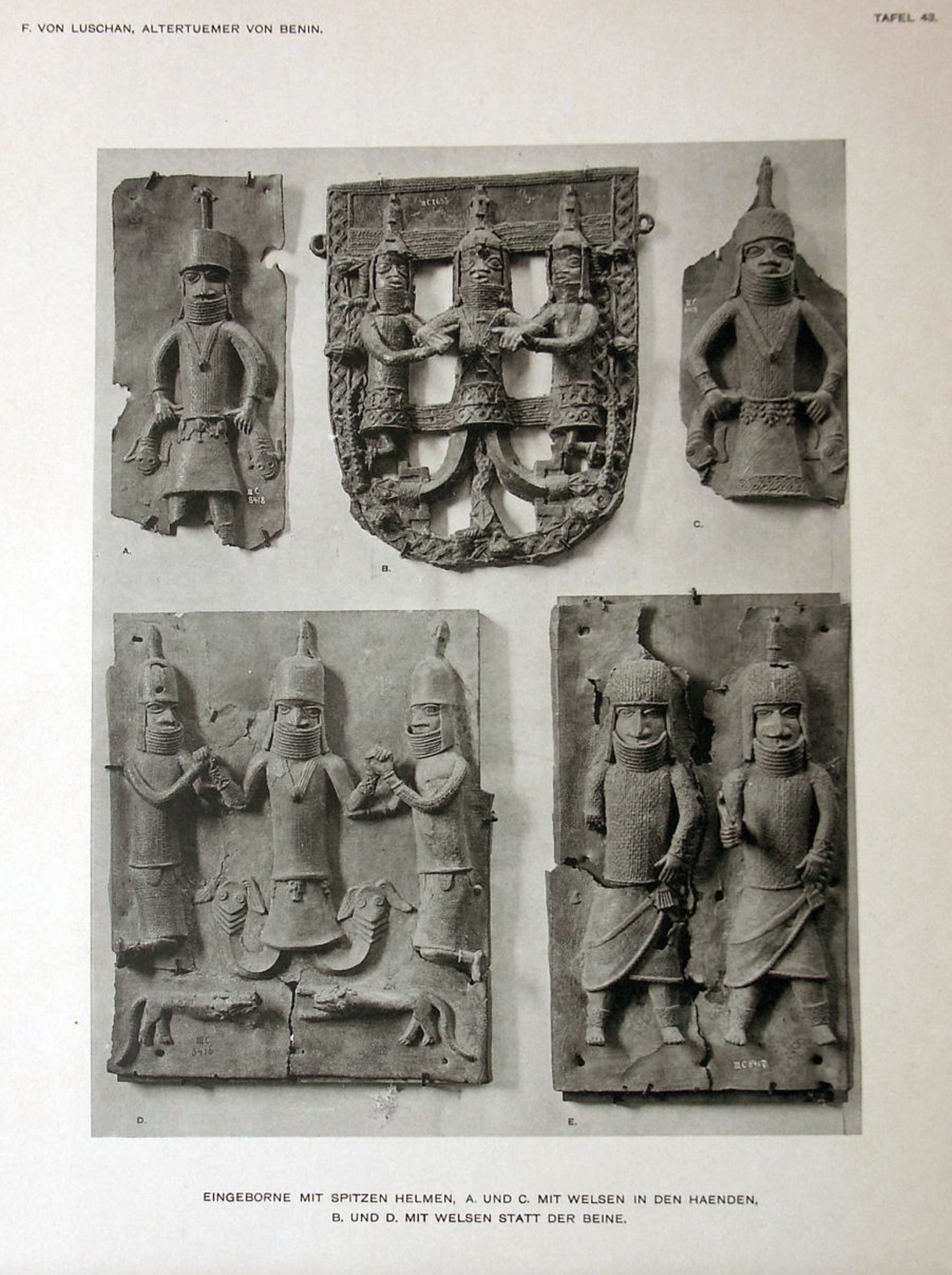wolfgang-jaenicke
A Bronze of an Ooni (Oba)
A Bronze of an Ooni (Oba)
Couldn't load pickup availability
A Bronze of an Ooni (Oba) in the Ife style, partly encrusted patina of many oxidation-layers, see the magnifications at the end of this photo-sequence.
What are the stylistic differences in the Bronze-Art of the Ife, Udo and Benin style?
The difference between the Udo and the Ife style refers to distinct artistic traditions within Nigerian art history, particularly visible in terracotta and bronze sculpture. These styles are commonly associated with two significant cultural centers in southern Nigeria: the town of Udo in the Benin area and the ancient city of Ife in Yorubaland.
The Ife style, associated with the Yoruba city of Ile-Ife, is renowned for its naturalism. Sculptures in this tradition, dating from approximately the 12th to 15th century CE, often depict human figures with highly naturalistic proportions and finely modeled facial features. Notably, the Ife heads made of terracotta and brass/bronze demonstrate detailed rendering of facial scarification, hair patterns, and other individualized traits, indicating both a mastery of metallurgical technique and an aesthetic rooted in mimetic representation. The Ife corpus has often been described as classically 'realistic', a term that has sometimes been problematically contrasted with European traditions of naturalism, although this comparison is increasingly avoided in contemporary scholarship.
In contrast, the Udo style, which appears later and is linked to the region around Benin during a period of political decentralization following the decline of centralized authority in the Benin kingdom, is markedly different. Udo figures are often characterized by a more schematic or stylized form. While still representational, Udo sculptures show less emphasis on individual portraiture or anatomical precision. The forms are frequently more abstract, with simplified or exaggerated proportions, possibly reflecting different ritual functions or aesthetic values within the community.
The stylistic divergence between Ife and Udo is not merely chronological or technical but reflects distinct cultural logics. The Ife style may be interpreted as expressing divine kingship through an idealized naturalism that ties the ruler to ancestral and spiritual legitimacy. The Udo style, on the other hand, might reflect a more localized or community-oriented religious practice, where figural abstraction facilitates symbolic rather than representational communication.

Ife - and Benin Ausstellung Wolfgang Jaenicke Gallery 2019, left in the photo an Ife sculpture with a similar domed coiffure.
Rewal, Henry J., and Pemberton III, John. Yoruba: Nine Centuries of African Art and Thought. New York: The Center for African Art, 1989.
Ben-Amos, Paula. The Art of Benin. London: Thames and Hudson, 1980.
Height: 70 cm
Weight: 18,1 kg

A previously little-researched Ife style, we collected in the last ten years, at least 8 similare sculptures and plates in this manner.

A similar headdress is also found on some Benin plates. It can be assumed that this
fashionable accessory was transferred from the Ife culture to Benin. Abb. von Luschan, Altertümer von Benin, Bnd 2, plate 43.














































